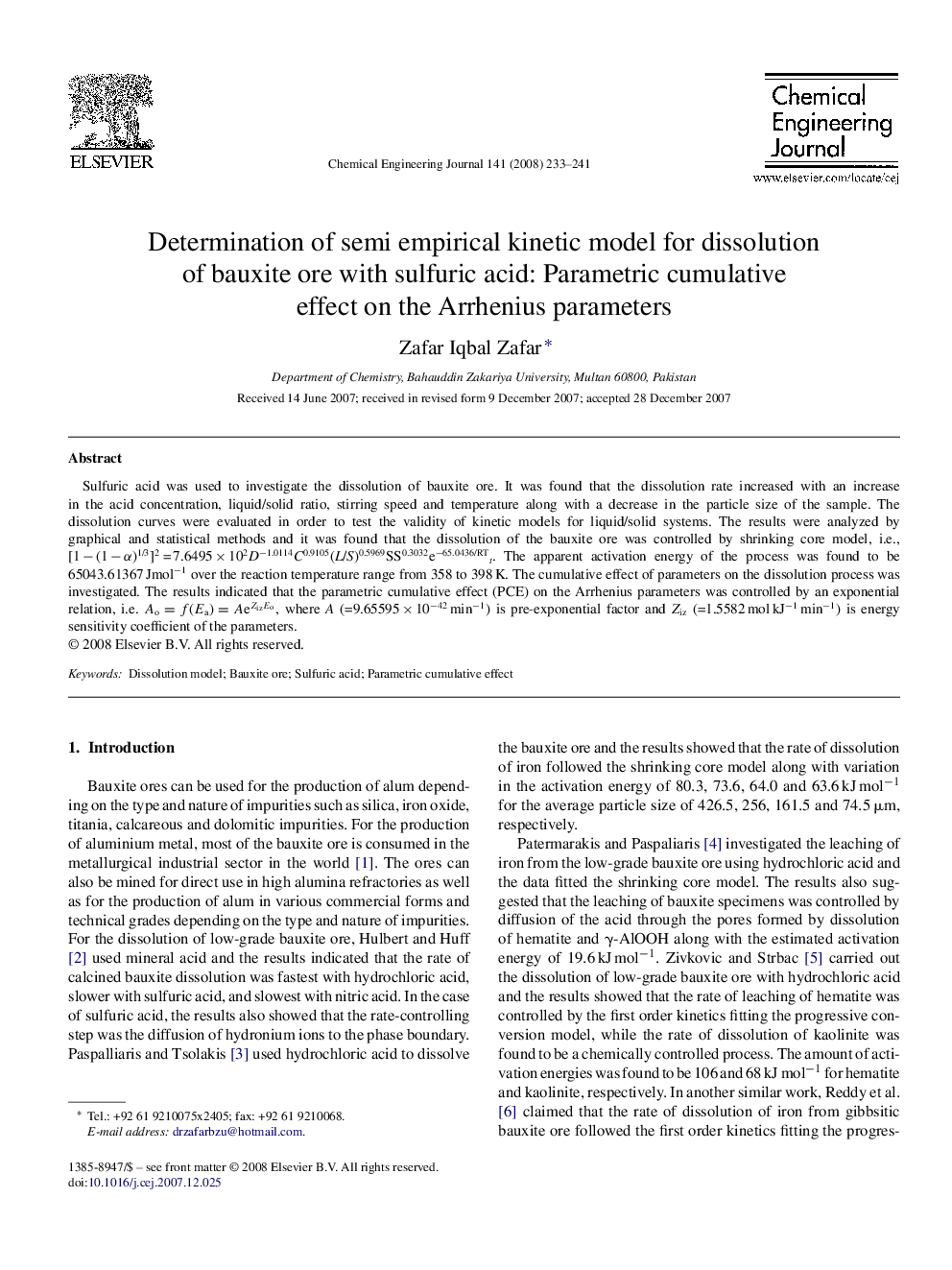| Article ID | Journal | Published Year | Pages | File Type |
|---|---|---|---|---|
| 153057 | Chemical Engineering Journal | 2008 | 9 Pages |
Sulfuric acid was used to investigate the dissolution of bauxite ore. It was found that the dissolution rate increased with an increase in the acid concentration, liquid/solid ratio, stirring speed and temperature along with a decrease in the particle size of the sample. The dissolution curves were evaluated in order to test the validity of kinetic models for liquid/solid systems. The results were analyzed by graphical and statistical methods and it was found that the dissolution of the bauxite ore was controlled by shrinking core model, i.e., [1 − (1 − α)1/3]2 = 7.6495 × 102D−1.0114C0.9105(L/S)0.5969SS0.3032e−65.0436/RTt. The apparent activation energy of the process was found to be 65043.61367 Jmol−1 over the reaction temperature range from 358 to 398 K. The cumulative effect of parameters on the dissolution process was investigated. The results indicated that the parametric cumulative effect (PCE) on the Arrhenius parameters was controlled by an exponential relation, i.e. Ao=f(Ea)=AeZizEoAo=f(Ea)=AeZizEo, where A (=9.65595 × 10−42 min−1) is pre-exponential factor and Ziz (=1.5582 mol kJ−1 min−1) is energy sensitivity coefficient of the parameters.
